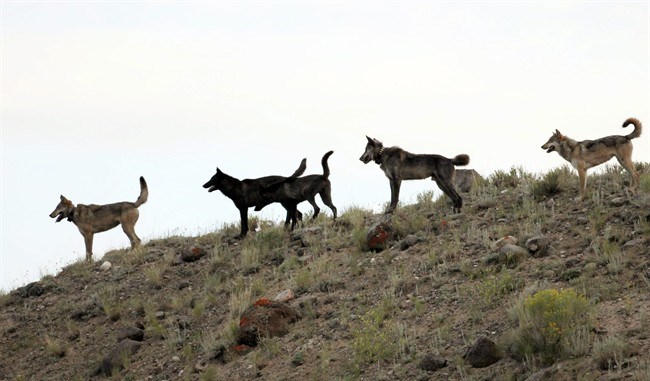LIVINGSTON, Mont. - Whether grey wolf hunting and trapping should continue outside the gates of Yellowstone National Park is in the hands of a state judge, after Montana wildlife officials pressed Monday to reinstate a temporary ban.
At issue in the lawsuit before District Judge Brenda Gilbert is the killing of wolves within two areas north of Yellowstone that total about 60 square miles. But the case has quickly emerged as the latest flashpoint in the bitter, decades-long fight over wolves in the Northern Rockies.
After several collared wolves that wandered out of the park were killed in recent months, wildlife advocates want a buffer zone around Yellowstone to keep the park's wolves safe from hunting in Montana, Wyoming and Idaho.
But backers of those states' legal harvests say the relatively small buffer area now on the table is merely the front end of a tactic to erode the public's legal ability to legally kill wolves.
Montana officials tried to shut down hunting and trapping in the two areas along the park's border in December, over worries that too many wolves used for scientific research were being killed.
The ban was put on hold and hunting and trapping resumed after a Jan. 2 ruling by state District Judge Nels Swandal. He issued a temporary restraining order siding with wolf hunt backers who argued in their lawsuit that the state failed to follow proper public notice procedures when it closed the areas.
With Swandal retired, the case is now before Judge Gilbert. She declined to rule immediately after taking two hours of testimony and arguments from attorneys during a Monday hearing in Livingston.
Wildlife advocates say the case threatens to drive away tourists who visit Yellowstone to see wolves in the wild.
"We've got people who book repeat trips (to the park) who say if this is allowed to happen they won't be coming back," said Brad Orsted, a wildlife guide and photographer from Gardiner.
Hunting outfitters in attendance at Monday's hearing suggested a more calculated motive by hunting and trapping critics: Restrictions on wildlife management that would effectively expand the park's no-hunting philosophy far outside Yellowstone's boundaries.
"Wolves are just a tool," said Bill Hoppe, a Gardiner-area outfitter. "These are just two small areas. You think that's where they're going to stop?"
Wolves across most of the Northern Rockies including Montana and Idaho came off the endangered species list in 2011 after a decades-long government restoration effort. Protections in Wyoming were lifted in 2012.
In a bid to curb the predators' attacks on livestock and elk herds, Montana officials this winter are seeking to sharply reduce a statewide wolf population estimated at about 650 animals at the end of 2011.
State officials draw a distinction between that goal and the closure around Yellowstone. Fish Wildlife and Parks Commission Chairman Bob Ream said no Montana wolf packs live in the affected area.
"The idea was that if those Yellowstone wolves come out, it is a relatively small area and would have little or no relationship with the Montana harvest," Ream said of the hunting and trapping closure.
Statewide, 149 wolves were reported killed in Montana through Monday.
The plaintiffs in the lawsuit are state Rep. Alan Redfield, Citizens for Balanced Use, Big Game Forever and Montana Sportsmen for Fish and Wildlife.
Their attorney, Jim Brown, argued Monday that wildlife officials violated public notice requirements when they closed the Yellowstone-area harvest during a Dec. 10 teleconference.
Officials didn't make a formal announcement that closures would be considered at the meeting, although state officials were quoted raising that possibility in a Dec. 9 story by The Associated Press.
"What we have here are violations of the Montana Constitution, state statutes and the department's own adopted regulations," Brown told the court. "Fish Wildlife and Parks made up its mind to take an action without the benefit of public input."
Montana Fish, Wildlife and Parks attorney Rebecca Jakes Dockter countered that the closure was valid and followed proper procedures. She said that included at least three rounds of public comment, including when the wolf season was first proposed in May, when it was finalized in July and on the day the closure was adopted.
Dockter added the issue would be reconsidered by the commission on Jan. 29 to offer further public input.



